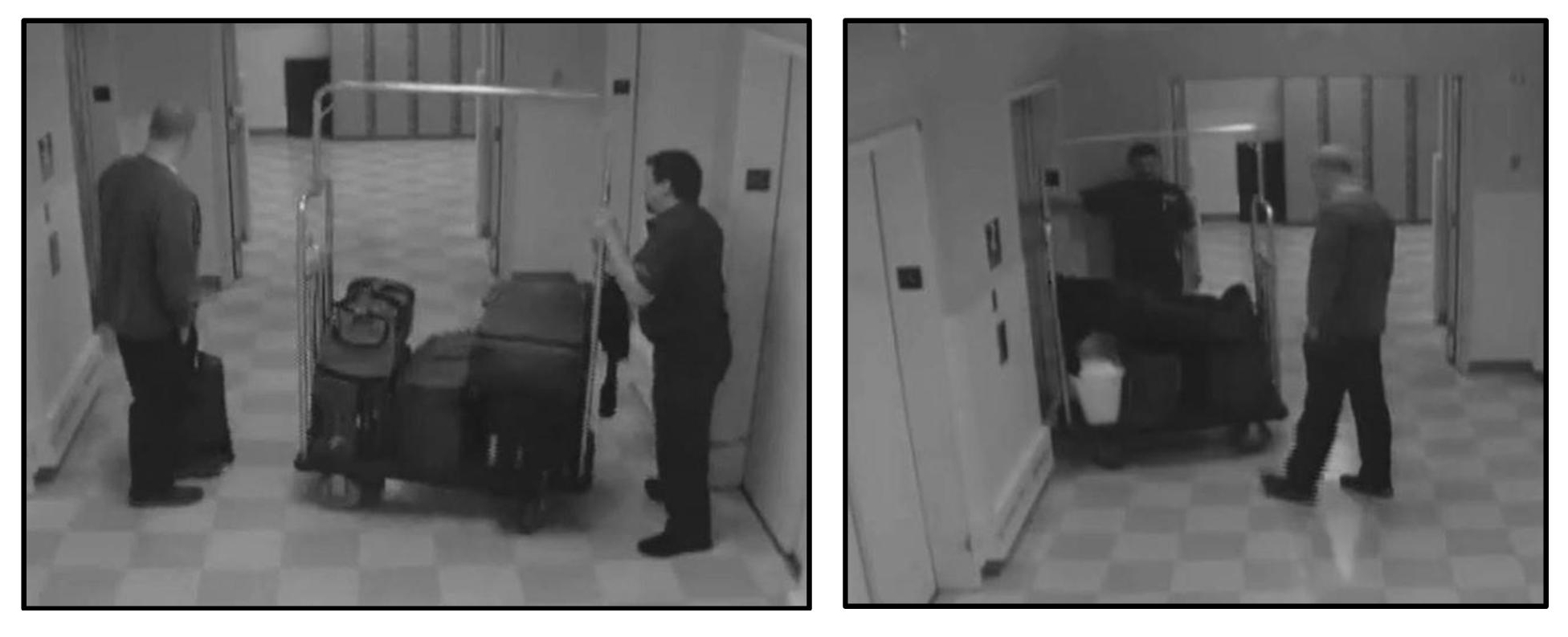Before meticulously planning the Route 91 shooting, Stephen Paddock, 64, had no criminal history and minimal contact with law enforcement, according to LVMPD’s preliminary report. He’d been married and divorced, and was living with his girlfriend in Mesquite, Nevada. (She was in the Philippines at the time of the shooting.) Professionally, Paddock had worked as an accountant and in real estate.
Guns were not a novelty for him. He purchased 29 firearms between 1982 and September of 2016. But in the year before the attack, he bought nearly twice as many firearms—55 in total—along with bump stocks, ammunition, scopes and cases.

Transporting Suitcases to the Room, from the LVMPD Report
Video footage from Mandalay Bay shows that, in the week leading up to the shooting, he took multiple suitcases to his room, played poker, bought snacks and chatted with hotel staff. He also left the hotel for extended periods of time. Then, on Sunday evening, October 1, he barricaded himself in a room on the 32nd floor, broke a window and, between 10:05 and 10:16 PM, went on a shooting rampage, killing 58 people and injuring more than 700. Around 11:20 PM, a strike team breached the room and found Paddock dead from “an apparent self-inflicted gunshot wound to the head,” the report said.

The Site, as the Shooter Saw It, from the LAMPD Interim Report
It’s impossible to fully understand what drove Paddock to commit this horrific attack. “I’d rather not apply the label ‘evil,’” said Frank Ochberg, a renowned psychiatrist and pioneer in the study of trauma, and an ACIA member. “To justify applying evil, someone has to be a psychopath—they have no conscience and never did—and/or they have to be sadistic. They have to derive pleasure from inflicting pain on others. He might have been in some altered state, like he was playing a real, live video game and he’s racking up a score. That’s not a bad thing to consider.”
Mental illness is another variable. An infectious disease, for example, could cause symptoms of dementia, like developing delusions or fixed, false beliefs. “As you are metaphorically ‘losing your mind,’ you surround yourself with objects that have comfort and meaning to you, like thousands of rounds of ammunition and 25 guns,” Ochberg added. “All of that fills an obsessive compulsive need. Then you decide to kill people. That decision could be a combination of mental illness and alienation. Paddock becomes, in a grandiose way, homicidal and suicidal.”
Obsessive compulsive disorder—where someone performs rituals to relieve overwhelming anxiety—could be another clue. Experts pointed out that Paddock seemed to relish in planning this atrocity. “We know Paddock was taking medications for anxiety; his autopsy report is out there, and he had valium in his system. So it makes some sense he could have, over the last year of his life, had increasing anxiety as his brain was failing and an increasing need for rituals and possibly self-enhancing fantasies,” Ochberg said.
“He seemed desperate to create an experience for himself in which he could be in full charge, in which he—not the casino or other powerful institutions—could control the odds and the outcome,” said ACIA member Steven Gorelick, a professor at Hunter College with a Ph.D. in criminology and training in media studies. “Watch the videos of him at the hotel, of his brief grins as he directs the hotel personnel who are bringing the guns and ammunition to his suite. I think he really enjoyed directing this enormous logistical task.”
Experts say we may never understand Paddock’s motivation, but what we do know is that he revealed to the world a terrifying new blueprint for committing acts of terror. “Copycat crimes will be coming,” said Pierson, the former director of the Secret Service. “What makes him different than other shooters is there is no indication he intended to do this. No confiding in others has been discovered and no manifesto has been revealed.”
By Abigail Jones
© 2018


